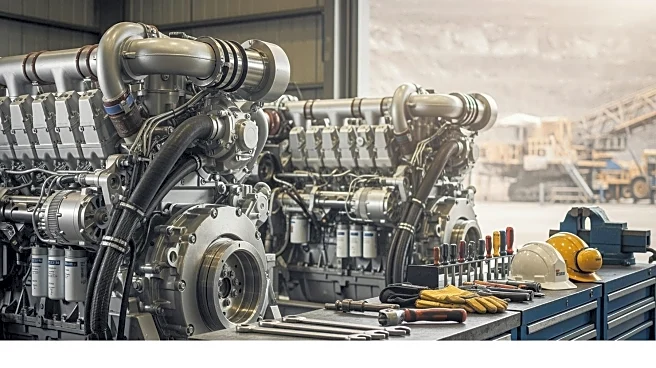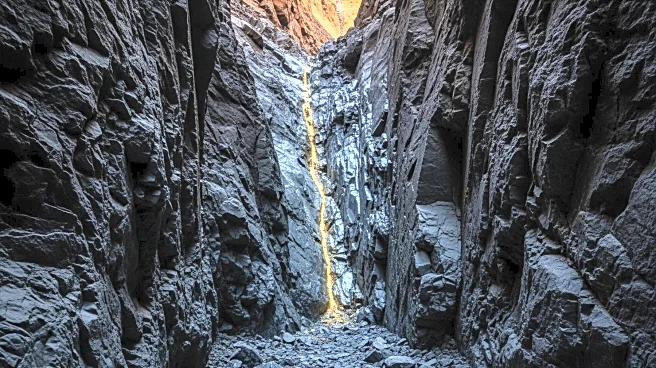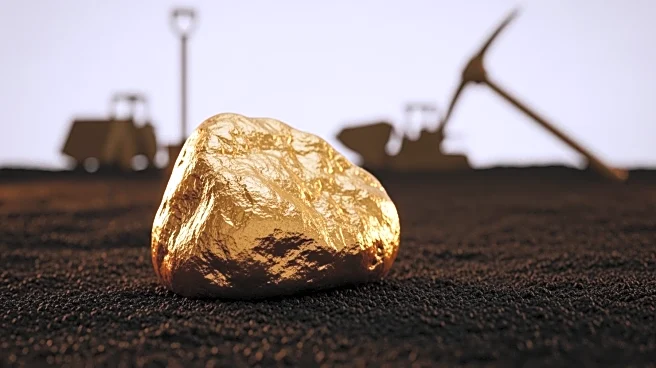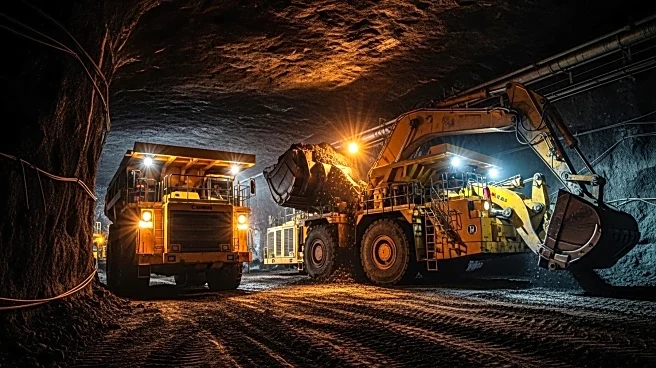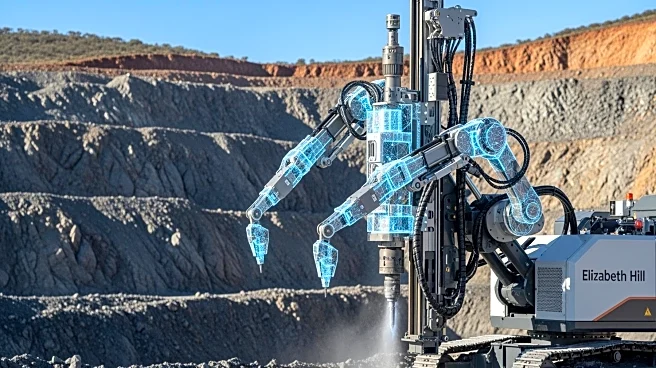What's Happening?
Savannah Goldfields is set to resume gold production in Georgetown, Far North Queensland, as the company has begun crushing and building stockpiles for the processing plant. CEO Brad Sampson announced
that the company is nearing its production goals set earlier this year, with plans to mine and process 18,200 tonnes of inferred resource from the Big Reef deposit. The company has already delivered over 750 tonnes of crushed gold-bearing material to the Georgetown run-of-mine pad, with more expected to be completed within a week. Additionally, at the Agate Creek Mine, 7,100 tonnes of stockpiled gold-bearing material is being processed, with over 3,000 tonnes safely delivered to Georgetown this month.
Why It's Important?
The resumption of gold production by Savannah Goldfields is significant for the local economy and the mining industry in North Queensland. As gold prices continue to rise, reaching US$4,176 per ounce, the company's operations could benefit from increased profitability. This development may also provide economic stimulation to the region, potentially creating jobs and supporting local businesses. The company's strategic focus on gold production aligns with the broader industry trend of capitalizing on high gold prices, which have seen a substantial increase over the past year.
What's Next?
Savannah Goldfields plans to complete the haulage of the remaining stockpile of crushed gold-bearing material to the Georgetown run-of-mine pad within a week. The company is expected to continue its production campaign, focusing on the Big Reef deposit. As gold prices remain high, the company may explore further expansion opportunities or increase production capacity to maximize returns. Stakeholders, including local government and industry partners, will likely monitor the company's progress and its impact on the regional economy.
Beyond the Headlines
The resumption of gold production by Savannah Goldfields may have broader implications for the mining sector in Australia. As the company successfully navigates logistical and operational challenges, it could set a precedent for other mining companies looking to optimize production amid fluctuating commodity prices. Additionally, the environmental impact of increased mining activity may prompt discussions on sustainable practices and regulatory compliance within the industry.



